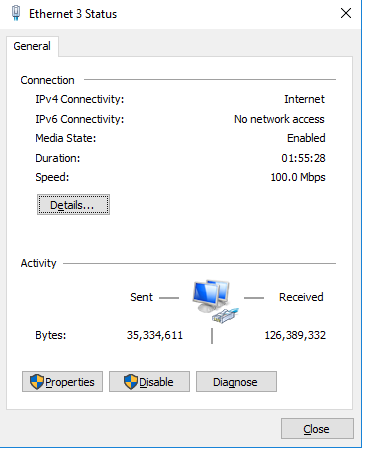Well, if ya got yourself gigabit internet but are only seein’ 100mbps speeds, don’t be so quick to panic, okay? There’s a bunch of things that could be goin’ on, and I’m here to walk ya through ‘em, real simple-like, so we can figure out what’s wrong and get things workin’ right. Now, don’t go thinkin’ you’re gettin’ ripped off, ‘cause there’s usually a fix to this sorta thing, ya just gotta know where to look.

1. The Cable Might Be the Problem
You’d be surprised how many folks forget this part. Most of the time, the cable is the culprit. See, if you’re using a cheapo cable or one that ain’t up to snuff, it’s gonna slow your speeds down. Now, a regular ol’ Ethernet cable might look fine and dandy, but there’s a big difference between the wires in one that’s built for 100mbps speeds and one that’s ready to handle gigabit speeds. If you’re seein’ 100mbps and you got gigabit internet, you’re gonna need a good quality Cat 5E or Cat 6 cable, at the very least. A Cat 5 cable just ain’t gonna cut it no more, not for the speeds you’re hopin’ for. So, check that cable, and if it’s old or worn out, it might be time to get a new one.
2. Check the Device You’re Using
Sometimes, the problem isn’t the internet or the router, it’s the device you’re using to connect. Not every device, like an old laptop or a cheap desktop, is built to handle the gigabit speeds. Some devices are stuck at 100mbps no matter what kind of connection you got. If you’ve got a newer laptop or a good desktop, then you’re in luck, but if it’s an old one, well, it might just be a limitation of the device itself. So, try this: plug in another device that you know can handle gigabit speeds and see if it gets the full 1000mbps. If it does, well, that tells ya that your original device just can’t keep up.
3. Your Router and Modem Settings
If you’ve got the right cable and the right device, but still can’t get that gigabit speed, then it might be somethin’ with the router or modem settings. I know this might sound fancy, but it’s real simple stuff. Some routers or modems are set up to limit the speed on certain ports or connections, especially if they’ve got a lotta devices connected to ’em. You might wanna log into your router’s settings and make sure that everything’s set up right, especially the speed settings for the Ethernet ports. They should be auto-negotiate or set to gigabit, not 100mbps. If it’s set wrong, change it and give it another try.
4. Network Congestion Could Be Slowin’ Ya Down
Another thing to keep in mind is network congestion. You know how it gets when there’s too many folks using the same road at once. Well, the same thing happens with the internet. If you got a bunch of devices in your house all sucking up bandwidth—whether it’s streaming TV, playing games, or someone downloading big ol’ files—it can slow your speeds down. Even though you’ve got a gigabit connection, if your router’s got too many things trying to use the internet at once, you might not get those full speeds. Try turning off some devices or disconnectin’ things that aren’t in use, and see if that helps your speed.

5. Try Another Switch or Port
If you’re using a switch to connect more devices to the internet, you might want to check that too. A lot of people don’t know this, but even if your modem and router are gigabit-capable, sometimes the switch you use might limit the speeds. If you recently upgraded your switch to a 1 Gbps one and still see only 100mbps speeds, there might be something wrong with the switch or one of the cables connecting it. Try using a different port on your switch, or switch to another one if you got it. This could make a big difference.
6. The Internet Provider Might Be Limiting You
Now, this is a little less common, but it’s still worth thinkin’ about. Some internet providers might have limitations or throttling in place, even on gigabit connections. They might advertise gigabit speeds, but depending on your plan, where you live, or the time of day, you might not always get those full speeds. If you’ve tried everything else and still ain’t gettin’ the speeds you paid for, it’s worth giving your internet provider a call to see if there’s any throttling or issues on their end. They might be able to help ya out, or at least explain why things are slower than expected.
7. Test the Speed at Different Times of the Day
Sometimes, the time of day can affect your internet speeds. If a lotta folks in your area are online at the same time, your speeds could be slower, especially in the evening when everyone’s home. So, don’t just test your speed once. Try checkin’ it in the morning, noon, and night to see if it changes. If it’s slow at certain times, it could be because too many folks are using the same network infrastructure, and that could be why you’re not gettin’ the full gigabit speeds.
So, there you have it. It’s a whole mess of things that could be slowin’ you down, but don’t worry. Just take it one step at a time, check your cables, devices, and settings, and make sure your internet provider isn’t the one messin’ things up. With a little patience, you’ll be back up to speed in no time.
Tags:[gigabit internet, 100mbps speed, ethernet cable, network congestion, device limitations, router settings, modem settings, internet troubleshooting, gigabit speed issues]



































![[Understanding com.android.wifi.dialog: Key Features and Setup Guide]](https://www.jackitproducts.com/wp-content/uploads/2024/11/8d6dc35e506fc23349dd10ee68dabb64-120x86.png)












